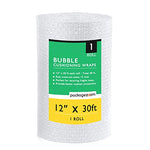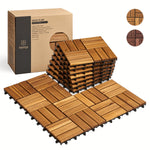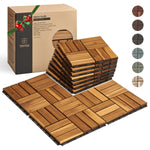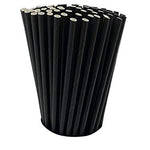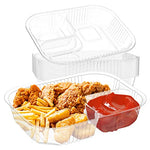You have no items in your shopping cart.
Imagine you're at a bustling kitchen, preparing a delightful meal for your loved ones. As you chop vegetables, marinate meat, and mix ingredients, there's one essential tool that can elevate your culinary experience while ensuring utmost safety and hygiene – food gloves. Whether you're a professional chef or a home cook, using the right food gloves can protect both your hands and the food you handle.
In this comprehensive guide, we'll delve into the world of food gloves, exploring their various types, benefits, and best practices for safe food handling. Join us on this journey as we shed light on everything you need to know about food gloves, from their role in preventing cross-contamination to frequently asked questions about their usage.
Food Gloves: What Are They and Why Are They Essential?
Food gloves, also known as disposable gloves or food-safe gloves, are protective coverings for the hands, designed specifically for use in food handling and preparation. These gloves act as a barrier between your hands and the food, preventing any potential transfer of harmful bacteria or contaminants.
When it comes to food safety, there are several reasons why food gloves are essential:
-
Cross-Contamination Prevention: Contamination is a major concern in any food preparation setting. Food gloves minimize the risk of cross-contamination by ensuring that pathogens from one food item don't come into contact with others.
-
Hygiene and Cleanliness: Wearing food gloves promotes a hygienic environment in the kitchen, ensuring that no foreign substances from your hands end up in the food.
-
Skin Protection: Certain foods or ingredients may cause skin irritation or allergic reactions for some individuals. Food gloves offer protection against such reactions.
-
Regulatory Compliance: In professional food establishments, the use of food gloves is often required to comply with health and safety regulations.
Now, let's dive deeper into the world of food gloves and explore the different types available.
Types of Food Gloves
There are several types of food gloves to choose from, each with its unique characteristics and advantages. Let's take a closer look at some popular options:
1. Latex Gloves
Latex gloves are a common choice due to their excellent elasticity and flexibility. They offer a snug fit, making it easier to handle intricate tasks in the kitchen. However, it's essential to note that some individuals may be allergic to latex. In such cases, non-latex alternatives are recommended.
2. Nitrile Gloves
Nitrile gloves are a popular alternative to latex gloves, especially for those with latex allergies. They provide similar elasticity and are resistant to punctures, making them ideal for tasks that involve sharp objects.
3. Vinyl Gloves
Vinyl gloves are a cost-effective option and are suitable for short-term use. They are less elastic than latex or nitrile gloves, but they still serve their purpose in low-risk food handling tasks.
4. Polyethylene Gloves
Polyethylene gloves are lightweight and often used for short-duration tasks. They are economical, but not as durable as latex or nitrile gloves. As such, they are best suited for light food handling duties.
5. Neoprene Gloves
Neoprene gloves are known for their heat resistance, making them an excellent choice for handling hot foods or working with kitchen equipment that generates heat.
Now that we've covered the different types of food gloves available, let's explore the benefits they bring to the table.
Benefits of Using Food Gloves
Using food gloves offers a range of benefits that enhance safety, hygiene, and overall efficiency in the kitchen. Here are some advantages:
1. Reduced Risk of Contamination
Food gloves act as a protective barrier, reducing the risk of transferring harmful bacteria from your hands to the food and vice versa.
2. Improved Food Safety
By minimizing the risk of cross-contamination, food gloves play a crucial role in maintaining food safety and preventing foodborne illnesses.
3. Enhanced Hygiene Standards
Wearing food gloves promotes better hygiene in the kitchen, as they prevent direct contact between hands and food.
4. Allergen Protection
For individuals with skin sensitivities or allergies, food gloves provide a protective layer against potential allergens present in certain foods.
5. Convenience and Efficiency
Food gloves make it easier to handle food items, especially when working with messy or sticky ingredients.
6. Regulatory Compliance
In food establishments, the use of food gloves is often a requirement to meet health and safety regulations, ensuring compliance and avoiding penalties.
With a clear understanding of the benefits of food gloves, let's delve into some best practices for their proper usage and disposal.
Best Practices for Using Food Gloves
Proper usage and disposal of food gloves are essential to maximize their effectiveness and maintain the highest standards of food safety. Here are some best practices to keep in mind:
1. Hand Washing Before Use
Before wearing food gloves, always wash your hands thoroughly with soap and water. This step ensures that you start with clean hands, reducing the risk of contamination.
2. Choosing the Right Type
Select the appropriate type of food glove based on the task at hand. For example, if you have a latex allergy, opt for nitrile or vinyl gloves instead.
3. Changing Gloves Between Tasks
For tasks involving different food items, change gloves between each task to avoid cross-contamination.
4. Avoiding Touching Non-Food Surfaces
Limit touching non-food surfaces while wearing gloves to prevent picking up contaminants.
5. Proper Glove Removal
To remove gloves safely, avoid touching the outer surface and peel them off from the wrist downward.
6. Disposal and Recycling
Dispose of used gloves properly in designated waste bins. Ensure that gloves made from recyclable materials are recycled accordingly.
By adhering to these best practices, you can harness the full potential of food gloves and ensure a safe food handling experience.
FAQs About Food Gloves
As we continue our exploration of food gloves, let's address some frequently asked questions related to their usage and benefits:
Q: Can I reuse food gloves?
A: No, food gloves are designed for single-use only. Reusing them can lead to cross-contamination and compromise food safety.
Q: Can I wear the same gloves for handling raw and cooked food?
A: It is best to use separate gloves for handling raw and cooked food to prevent cross-contamination.
Q: How do I determine the right size of food gloves for my hands?
A: To find the right size, measure the circumference of your dominant hand just below the knuckles. Refer to the glove sizing chart to find the appropriate fit.
Q: Are all food gloves latex-free?
A: No, while there are latex-free options like nitrile and vinyl gloves, some food gloves still contain latex. Always check the product description for latex content.
Q: Can I use food gloves for tasks other than food handling?
A: Food gloves are specifically designed for food handling purposes and may not be suitable for other tasks. It's best to use gloves intended for the specific task at hand.
Q: Can food gloves be used in cold or hot temperatures?
A: Yes, some food gloves are designed to withstand extreme temperatures. Neoprene gloves, for example, offer heat resistance, while other materials may be suitable for cold environments.
Conclusion
Food gloves play a crucial role in ensuring safe and hygienic food handling, whether in professional kitchens or home cooking environments. By providing a protective barrier between hands and food, they minimize the risk of cross-contamination and promote food safety.
With various types of food gloves available, individuals can choose the one that best suits their needs and preferences. From latex and nitrile to vinyl and polyethylene, each type offers unique advantages for specific tasks.
Remember to adhere to best practices when using food gloves, such as washing hands before use, choosing the right type, and changing gloves between tasks. By doing so, you can harness the full benefits of food gloves and maintain a high standard of food safety.
So, the next time you embark on a culinary adventure, don't forget to don your food gloves and experience the joy of cooking with confidence and peace of mind.



